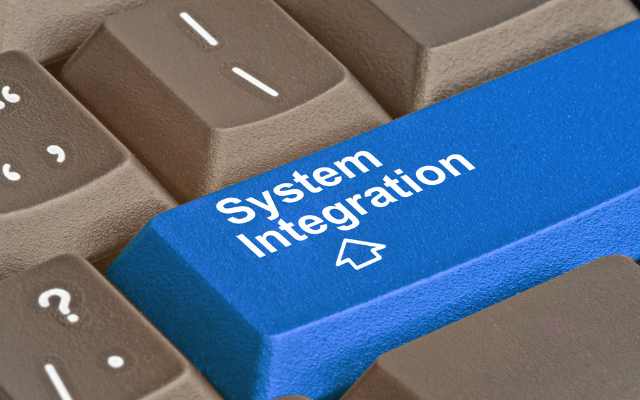How Is End-To-End Testing Different From System Integration Testing?

Testing is an important part of any software development process. It helps guarantee the software application is top-notch, secure, and fulfills client prerequisites. Examining the integrity of a software system requires two distinct forms of automation testing: end-to-end testing and system integration testing.
End-to-end testing is a comprehensive approach that tests an application from start to finish, while system integration testing centers around the working together of different sub-systems of the software application. End-to-end testing is meant to mimic real-life scenarios, while system integration testing is utilized to check the integration between two or more systems. Despite having their individual benefits and drawbacks, recognizing the difference between them is fundamental for guaranteeing the quality of a software system.
This blog will explore the differences between end-to-end and system integration testing, their benefits, and key differences. With this knowledge, you can ensure that your software applications are of the highest quality and ready for success.
What Is End-To-End Testing?
End-to-end testing is an integral part of the software development life cycle, as it helps to guarantee that all system components are performing together as expected. It is a complete form of testing that verifies that all system components interact and can successfully process data from beginning to end.
It is a critical step in the software development process, assisting in recognizing any difficulties that may arise when the software system components work together. End-to-end testing offers an efficient way to evaluate the quality of the software and address any potential issues before they become a problem.
Some of the key features of end-to-end testing are:
- Test management and planning.
- Automated testing.
- Quality assurance reporting and insights.
- Mobile testing capabilities.
- Design and experience testing.
- Solution integrations.
End-to-end testing executed in the cloud is preferred because it offers reliability, flexibility, and scalability.
LambdaTest is a cloud-based platform that provides a reliable end-to-end testing approach. It integrates various automation testing tools like Selenium, Appium, and LambdaTest can help streamline your testing processes and ensure that your system works flawlessly across all devices and platforms.
Testing Objectives of End-to-End Testing
End-to-end testing verifies the software system’s performance from start to finish. This ensures how the application interacts with its other components, user interface, and overall responsiveness and accuracy. With end-to-end testing, we could check that the software system meets needs and performs as per user expectations. End-to-end testing ensures that it fulfills the Software Requirement Specification (SRS) and corrects software application functionality, which is critical in today’s digital world.
However, to perform end-to-end testing, some intended objectives are followed while executing a software test. The essential objectives of end-to-end testing are:
- To replicate a user’s journey from start to finish, providing the opportunity to evaluate the application’s various components and layers.
- To get a realistic perspective of the user’s experience.
Benefits Of End-to-End Testing
End-to-end testing provides an extensive assessment of the software system, helping to identify differences between the actual and intended results. The testing entitles developers to refine the software application and reduce the risk of errors. End-to-end testing ensures that different components and features are compatible and ensures that the addition of any new feature does not impact other functionality or give rise to new bugs.
By taking on end-to-end testing, organizations can be sure that their software application is secure, effective, and of the highest standard. End-to-end testing offers numerous benefits in developing high-quality software applications.
Some of them are listed below:
Reduce Development Costs: End-to-end testing can help reduce the cost of development and maintenance by testing the entire software application at once rather than testing each component separately. It is more cost-effective, especially for larger software projects.
Reduce System Breakdowns: End-to-end testing can also help reduce the risk of software application breakdowns because it verifies the entire software system simultaneously.
Ensuring System Reliability: End-to-end testing is a valuable utility that can help organizations ensure their applications function properly. This type of testing is designed to test an application based on its individual components, which help to identify early bugs and errors and thus ensure higher quality.
Improving End-User Satisfaction: End-to-end testing can help ensure that an application meets user requirements, as the software system is tested from the user’s point of view.
Approaches to End-to-End Testing
End-to-end testing can be approached from two different angles: Horizontal E2E and Vertical E2E.
Horizontal End-to-End Testing
Horizontal end-to-end testing is executed from the user’s perspective utilizing the software. It determines whether the user can easily interact with the software and make the most of its features. It is understood as the type of testing that focuses on verifying the functionality of a specific feature or component across all layers and software systems. It also helps to identify any bugs or irregularities that may get in the way of the user accessing the software’s various features.
Vertical End-to-End Testing
Vertical end-to-end testing verifies the entire software system or application, end-to-end, across all layers and components. It is usually done when the user interface needs to be more present or simple. This procedure consists of multiple layers or levels (data, business, integration, and presentation layers) being tested in a hierarchical or sequential order. To achieve high-quality results, each system component needs to be checked thoroughly from start to finish.
What is System Integration Testing?
System integration testing is a crucial element of the Software Development Life Cycle that ensures that the individual components of a software system are interrelated as expected. It is vital to ensure the integrated components’ quality and dependability and discover any unexpected application functions. This testing approach involves testing the integrated software application as a whole after all its specific components are tested independently.
This form of testing is conducted after all software system components are merged and can necessitate multiple diverse types of test cases. System integration testing is essential for all testing and development teams involved in software application production. During system integration testing, testing is performed on the integrated system, and defects or issues that arise during testing are tracked, reported, and resolved.
Some of the features of system integration testing are:
- Helps in the early detection of defects
- Correct data flow
- Correct timing
- Correct control flow
- Correct memory usage
- Corrects software requirements
- Flexible scheduling of defect fixes
Testing Objectives of System Integration Testing
System integration testing is essential to software development and release cycles. It ensures that all system components are integrated and functioning properly. By examining the components individually, we can guarantee that the system works correctly when taken as a whole.
A few key testing features of system integration testing are:
- Ensures that when different modules collaborate to develop software applications, they stay in sync and communicate correctly.
- Enables checking that the different interfaces of the application interact as they should and ensures that the data moving between each module is valid.
- Make sure that the relationship between modules is working as expected.
Benefits of System Integration Testing
System Integration Testing ensures that all components and systems run effectively and as anticipated. It assists in identifying any variances or inconsistencies between different elements and ensures that the system meets the design requirements. Some benefits of system integration testing are:
Ensures System Functionality: System integration testing is critical to ensuring system functionality. It assures the various components of a software system are able to communicate and interact with each other to attain a desired outcome.
Improves System Reliability: System integration testing validates the system’s performance and reliability and is often used to test integrated components’ interoperability, compatibility, and usability.
Improves End User Satisfaction: With proper system integration testing, organizations can ensure their software applications can handle the expected load, can interact with different components, and provide an optimal user experience. Ultimately, it enables organizations to maximize the value of their application by validating their performance, scalability, and usability.
Identifies Potential Issues: System integration testing verifies whether the application’s components can communicate with each other, exchange data, and perform their intended functions without any issues between two or more software systems.
Reduces Time and Cost: System integration testing is cost-effective and time-efficient due to its focused approach. It requires fewer resources and is often done internally by the development team.
Approaches to Integration Testing
Depending on the size of your project, team, budget, and other considerations, different system integration testing methodologies might be more suitable for you. Here’s an overview of the three most commonly used approaches.
The Bottom-Up Approach
The bottom-up approach focuses on integrating individual, smaller application components into larger systems. Higher-level modules must be simulated in order to run the tests, which are directed to drivers. This process builds to a conclusion as the testing gradually incorporates more components until the entire application is complete. This strategy allows testers to quickly detect and repair any issues, as the individual components are easier to troubleshoot.
The Top-Down Approach
In the top-down approach, the bigger, more complex application’s components come first, and the smaller, lower-level ones are mimicked. These copied components are called “stubs” in this approach. This technique is the complete opposite of the bottom-up strategy.
The Big Bang Approach
Rather than gradually incorporating all components, the “big bang” approach integrates them all at once. This allows for a test of whether the system functions as expected but also comes with a risk. Identifying the main defect component can be challenging if a problem arises within a fully integrated module. This strategy can be time-consuming in finding a defective module, and the cost of repairing it after the fact is high.
End-To-End Testing Vs. System Integration Testing
| End-To-End Testing | System Integration Testing |
| Done when the product is nearly ready for release | Starts at the early stages of development |
| Aims to test the user experience from beginning to end | Aims to test how external systems work with internal modules |
| Expensive to execute, both in terms of software and hardware | Cost efficient to implement |
| Slower to perform | Faster to perform |
| Higher-level than integration testing | Higher-level than unit testing |
- Achieving End-to-End Testing Success: Best Tools and Methods to Ensure Software Reliability
- How to reinstate a suspended license
- Most trending games on youtube in 2023
Conclusion
End-to-end testing is a type of software testing that checks the entire system from start to finish. At the same time, system integration testing concentrates on the connection between different systems, components, or subsystems. End-to-end testing is wider in scope and is used to test the entire system. System integration testing is more precise testing that verifies the correctness of the integration between different parts.
To sum up, both types of testing hold equivalent significance in the product development cycle. Therefore, both end-to-end and system integration testing is needed to unearth the flaws of different categories.






